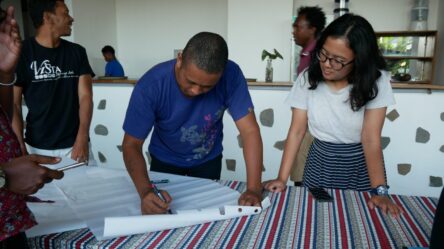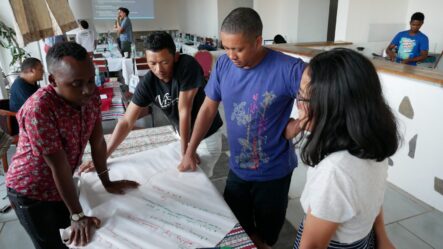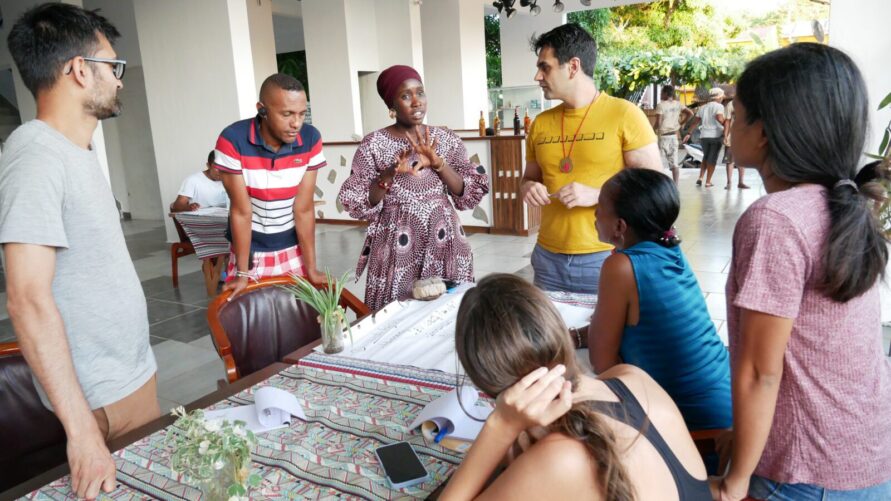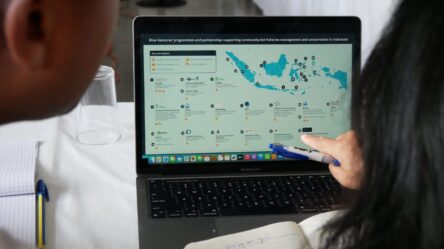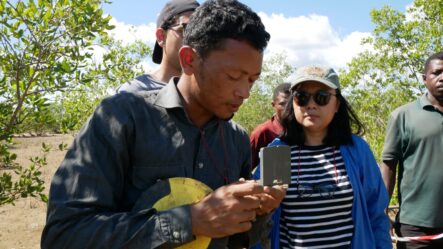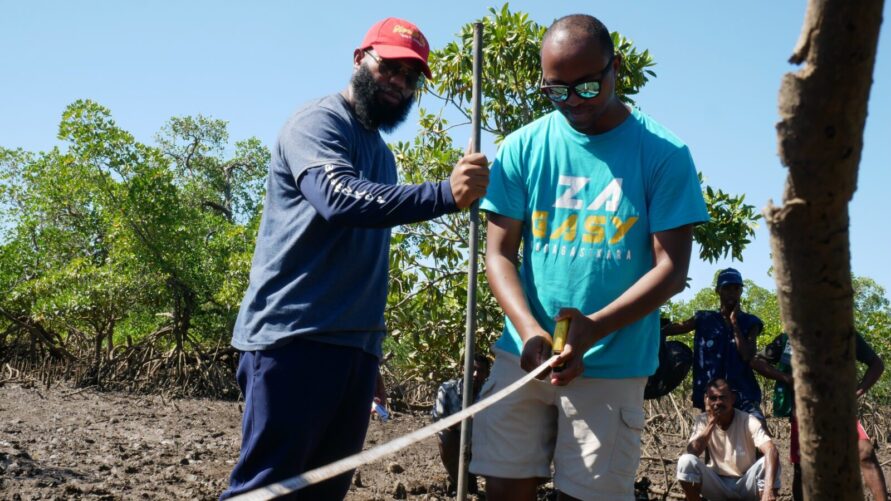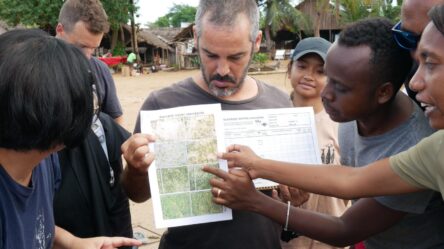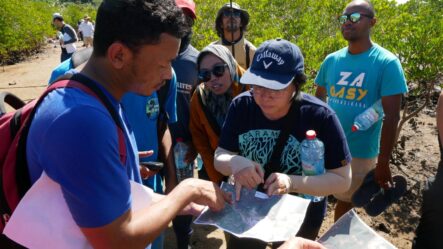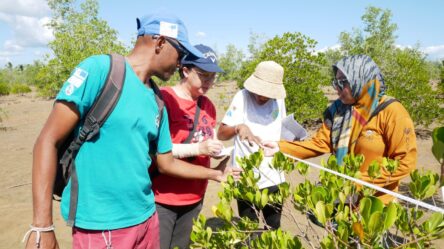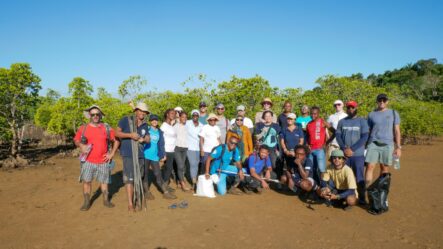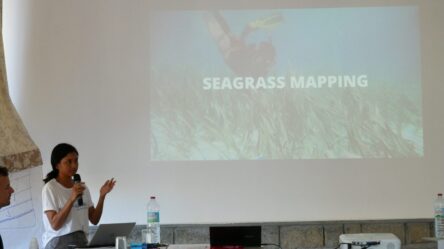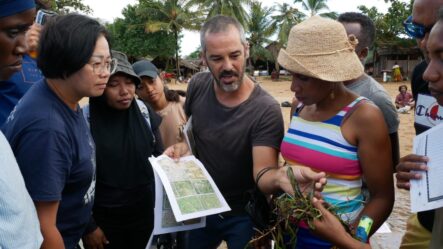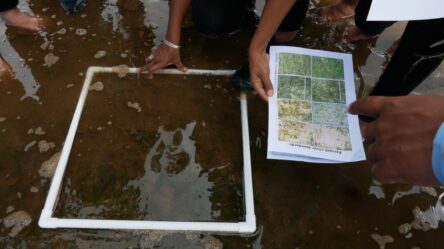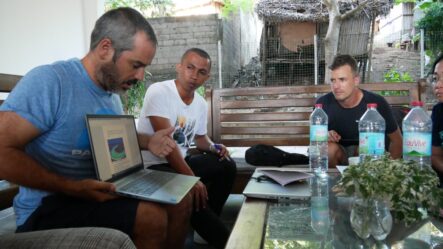Holly Elgar joined Blue Ventures in 2022 as a Senior Scoping Officer for blue carbon ecosystems. Holly uses her expertise to identify potential sites to expand our community-led mangrove management projects around the world. Here she talks about her recent first trip to Madagascar for our first-ever learning exchange on blue carbon ecosystems.
Flying into Nosy Be and seeing the mangrove forests for the first time from above was breathtaking. The natural environment was even more beautiful once we landed, and I couldn’t wait to spend time in such a magically rich ecosystem. It was my first time in Madagascar, where technicians and experts from Blue Ventures’ sites worldwide have just met for our first-ever blue carbon ecosystems (BCE) learning exchange.
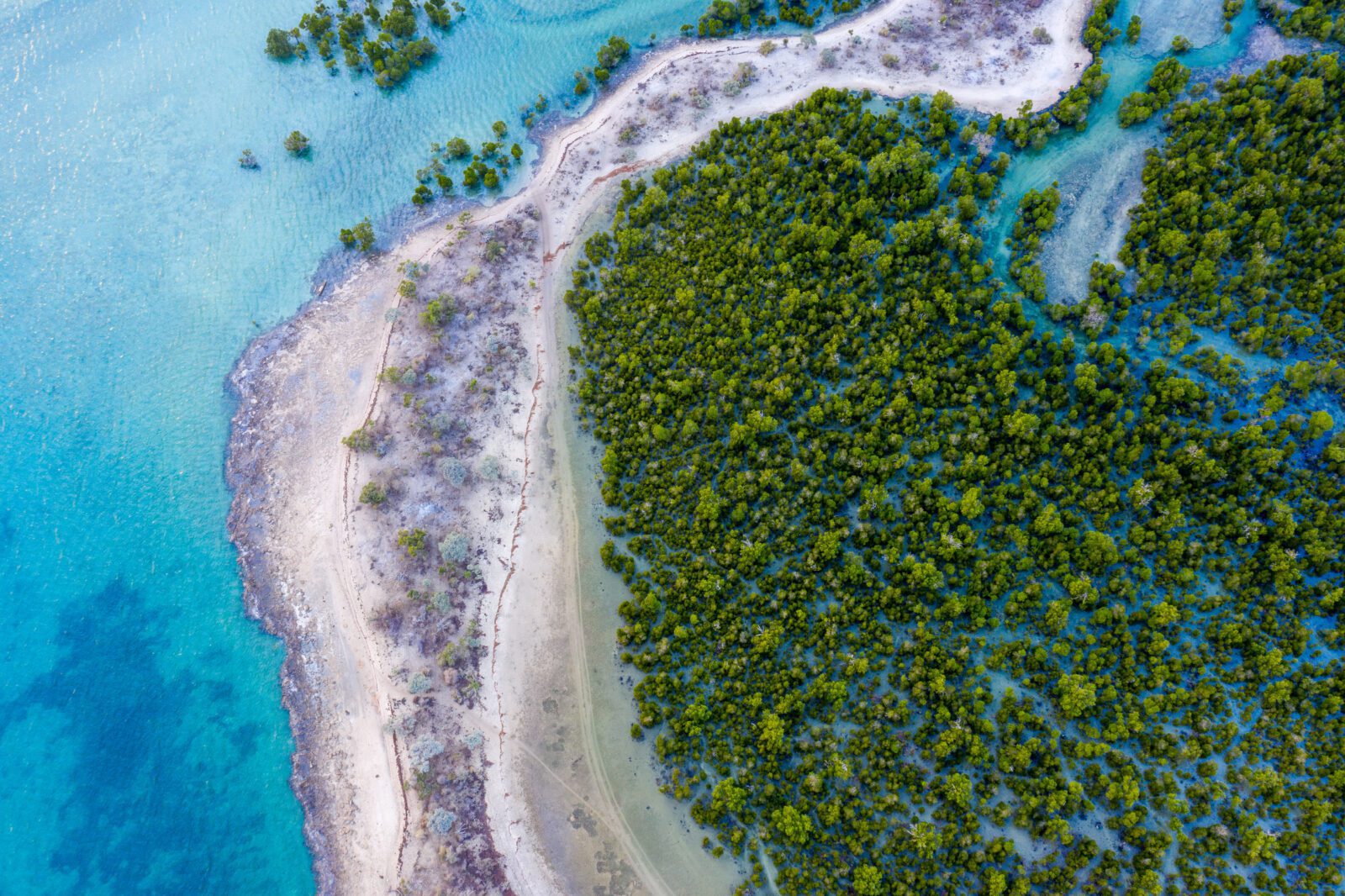
The forum aimed to create a space for sharing best practices and experiences on BCE monitoring and management and to foster connections to establish a global network to facilitate further peer learning and training. The learning exchange incorporated classroom sessions and practical exercises led by various technicians and specialists whose expertise ranged from mapping and monitoring to governance, fisheries management, communications, and gender.
Over the ten days, we exchanged knowledge on advocacy, governance, community rights, mangrove ecosystem restoration, monitoring and evaluation, ecosystem management, and mapping. These different themes enabled us to understand Blue Ventures’ work in the different countries represented and the role of communities in the projects. – Awa Rane Ndoye, West Africa Mangroves Advisor in Senegal.
We started working on mangroves and blue carbon in Madagascar in 2011, supporting local communities to develop incentive-based mangrove conservation and restoration approaches. Madagascar was, therefore, a perfect fit as a host country for our first BCE forum.
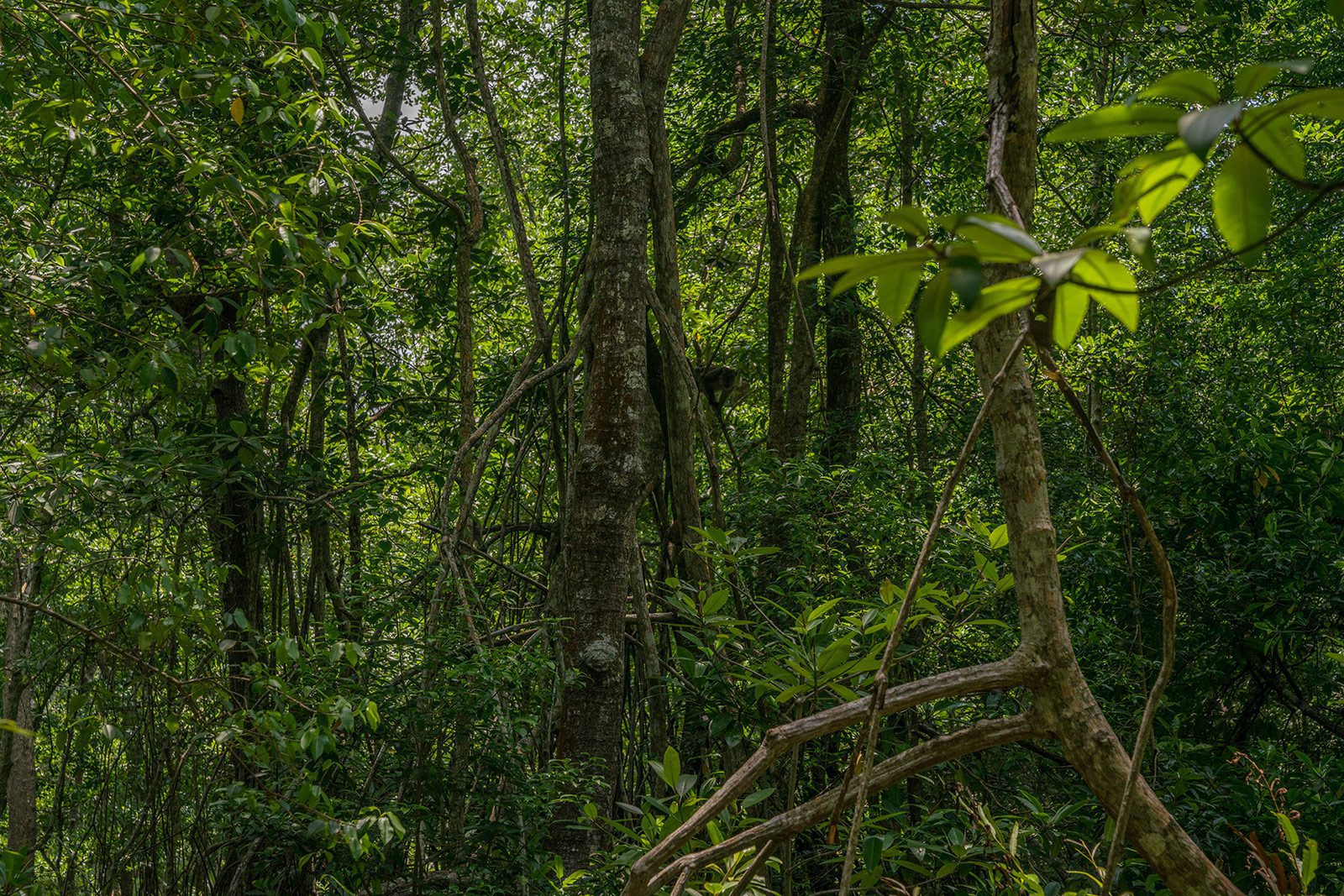
Indah Rufiati, our Fisheries Lead in Indonesia, spoke about why she travelled to the exchange.
I had heard about the wonderful work the Madagascar team is doing, so it was a great pleasure to witness their work and meet, discuss and learn from them in person during this exchange. I was passionate about attending so I could strengthen the collaboration between our two regions: Asia and Africa.
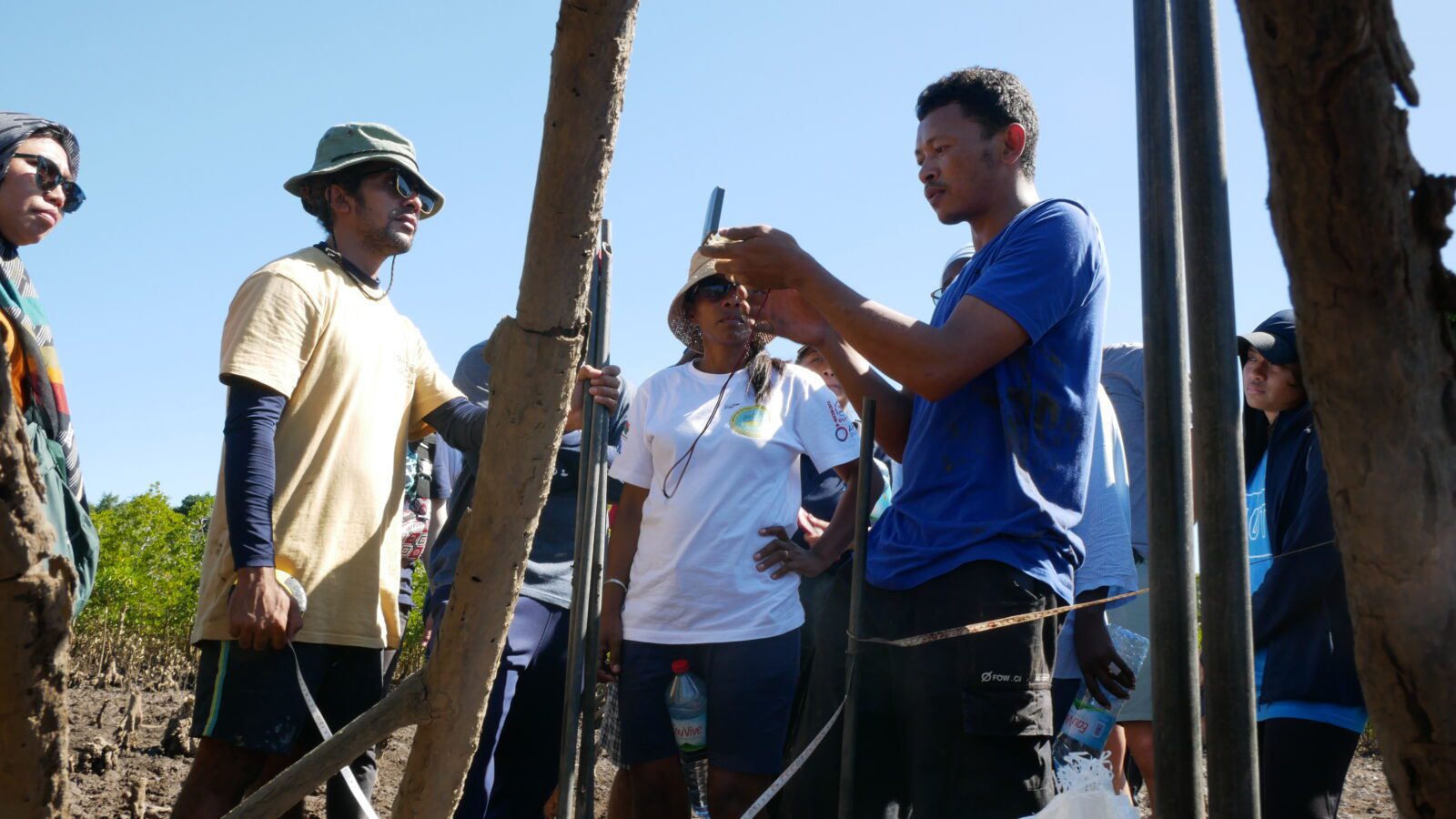
In addition to learning from each other, we went on field visits to the mangrove forests of Tsimipaika Bay, where we supported communities to successfully secure the management rights of over 6,000 hectares of mangroves. This opportunity to be within the open canopy mangrove forests was amazing, and they had an extraordinary amount of species diversity. We were lucky enough to see the forest from an elevated viewpoint which highlighted how vast the area was. I learnt how to survey seagrass beds and watched giant sea turtles feed away on them.
My favourite part of the exchange, however, has to be meeting our Blue Ventures colleagues from all various field teams around the world and having the time to get to know and learn from one another about what different mangrove and seagrass work is happening across geographies.
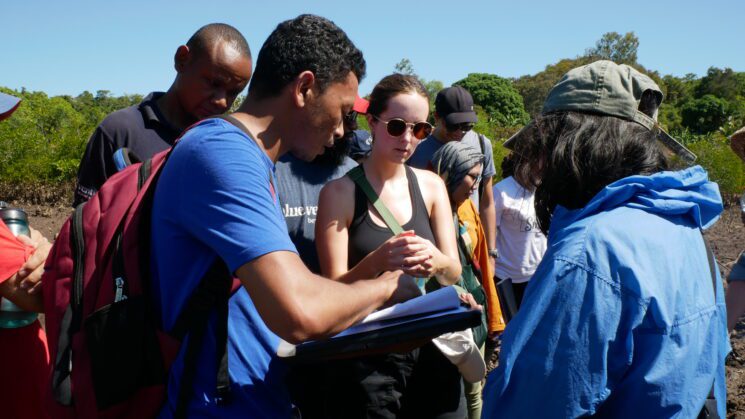
Esther Ngure, Blue Ventures’ Technical Advisor for Mangrove Markets, was part of the core team that helped make the learning exchange a reality. She commented, “Bringing the group together helped start standardising the methodologies used to monitor, map and manage blue carbon ecosystems across Blue Ventures sites.”
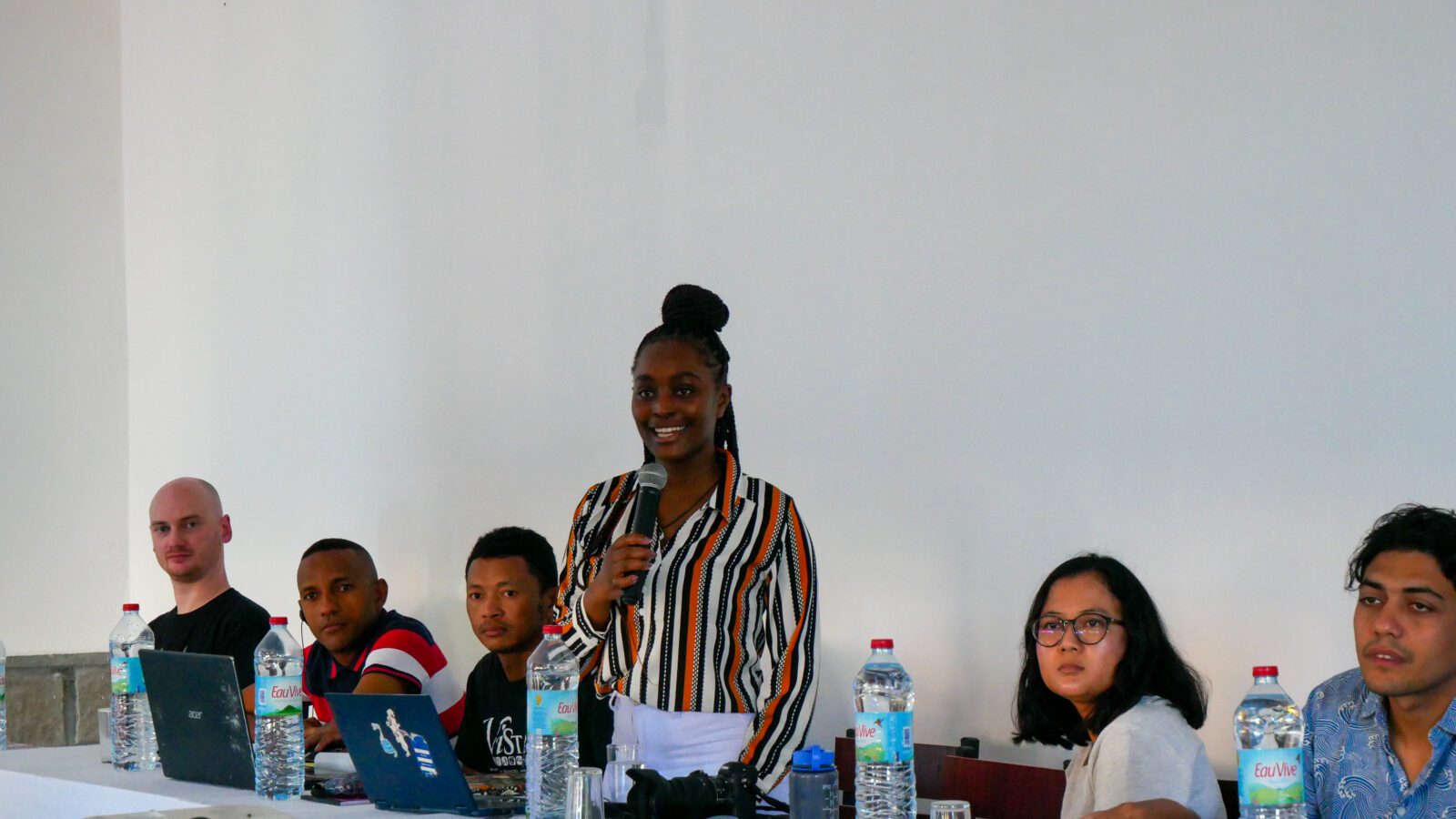
“It was a good forum for knowledge gathering, which our technical and knowledge team will use to develop toolkits further to guide practitioners and our partners in implementing the management of blue carbon ecosystems,” Ngure added.
Blue carbon ecosystems, such as mangroves and seagrass, are getting a lot of attention for their potential for climate change mitigation. Mangroves and seagrass also provide fundamental ecosystem services to coastal communities, including protecting the coast from erosion and extreme weather events, and, most importantly, supporting fisheries. – Nick Piludu, Technical Advisor – Mangroves and Blue Carbon, Blue Ventures.
Managing blue carbon ecosystems and related fisheries is a crucial component of our Thriving Fishers, Thriving Oceans strategy, and this event was a fantastic platform for our colleagues to get together and share knowledge and experiences, and build global capacity to support coastal communities to manage their mangroves and seagrass. I’m delighted to add that since the learning exchange, some of our partner sites that currently only manage one ecosystem have begun developing strategies to improve and expand their monitoring to other blue carbon ecosystems.


